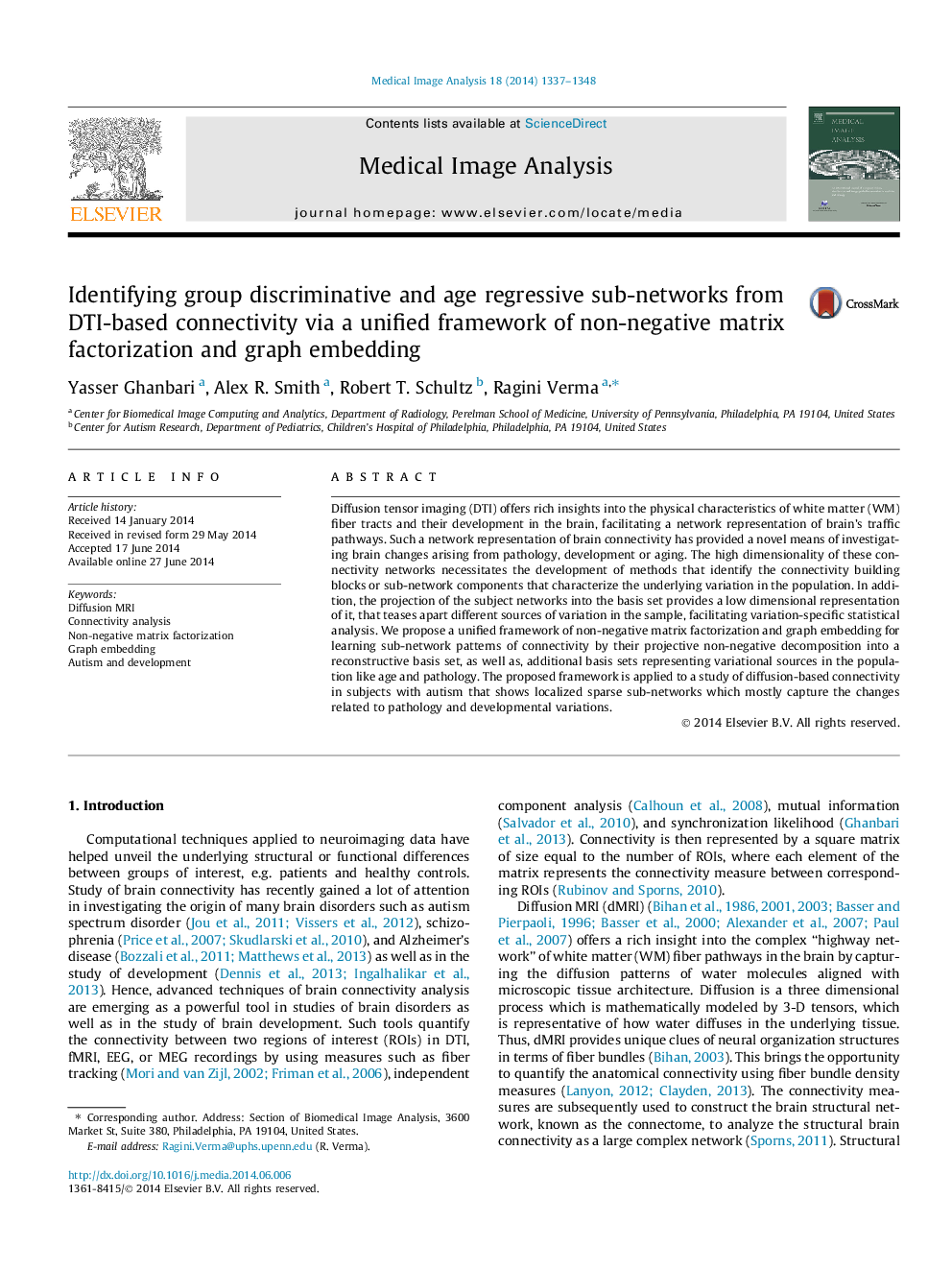| کد مقاله | کد نشریه | سال انتشار | مقاله انگلیسی | نسخه تمام متن |
|---|---|---|---|---|
| 444051 | 692862 | 2014 | 12 صفحه PDF | دانلود رایگان |

• We propose a new framework for population studies of brain structural connectomes.
• We identify meaningful basis subnetworks representative of population variations.
• Discriminative and regressional sources of variation are captured in the population.
• An NMF approach combined with graph embedding is developed to find desired bases.
• Method was applied to obtain discriminative and developmental subnetworks in autism.
Diffusion tensor imaging (DTI) offers rich insights into the physical characteristics of white matter (WM) fiber tracts and their development in the brain, facilitating a network representation of brain’s traffic pathways. Such a network representation of brain connectivity has provided a novel means of investigating brain changes arising from pathology, development or aging. The high dimensionality of these connectivity networks necessitates the development of methods that identify the connectivity building blocks or sub-network components that characterize the underlying variation in the population. In addition, the projection of the subject networks into the basis set provides a low dimensional representation of it, that teases apart different sources of variation in the sample, facilitating variation-specific statistical analysis. We propose a unified framework of non-negative matrix factorization and graph embedding for learning sub-network patterns of connectivity by their projective non-negative decomposition into a reconstructive basis set, as well as, additional basis sets representing variational sources in the population like age and pathology. The proposed framework is applied to a study of diffusion-based connectivity in subjects with autism that shows localized sparse sub-networks which mostly capture the changes related to pathology and developmental variations.
Figure optionsDownload high-quality image (105 K)Download as PowerPoint slide
Journal: Medical Image Analysis - Volume 18, Issue 8, December 2014, Pages 1337–1348